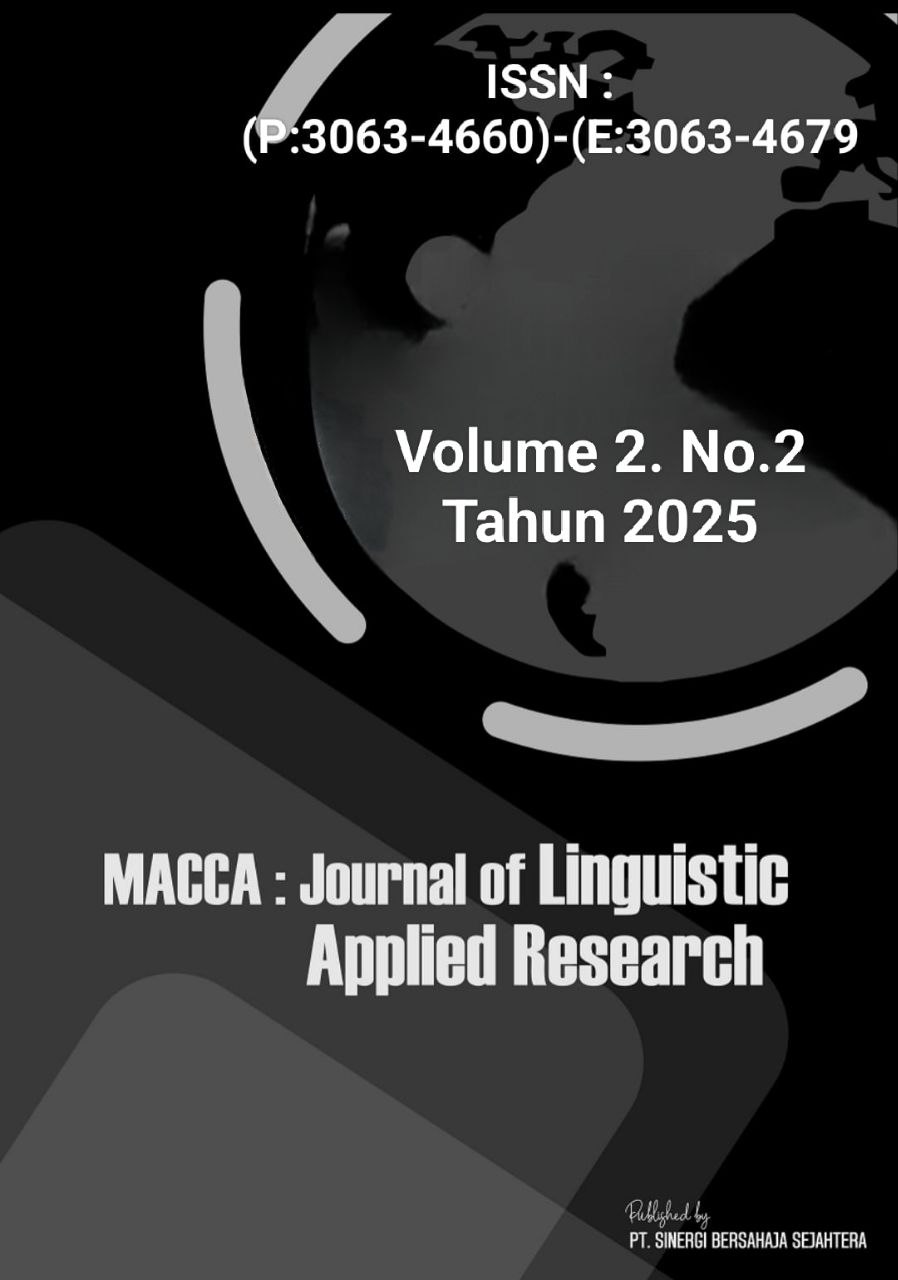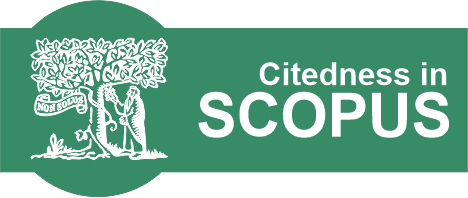Analysis of language Style And Diction In The Song “Helena” by My Chemical Romance
Keywords:
Language Style, Diction, Figurative Language, Stylistics, Semantic Analysis, Song Lyrics, My Chemical RomanceAbstract
This research investigates the stylistic and lexical elements in the song lyrics of “Helena” by My Chemical Romance, focusing on how language style and diction convey emotional depth and narrative meaning. The study explores the integration of literary devices—such as metaphor, personification, hyperbole, and antithesis—alongside the use of denotative and connotative diction to reflect themes of loss, grief, and longing embedded in the lyrics.
Using a qualitative descriptive method, the research combines stylistic and semantic analysis. Primary data were obtained from the official lyrics, while secondary data were collected through interviews with three fans of the band. The findings show that metaphor is the most dominant language style used, followed by personification, hyperbole, and antithesis. Additionally, the lyrics contain a rich interplay between denotative and connotative meanings, particularly in emotionally charged words and phrases such as “hearse,” “blade,” and “so long and goodnight.”
The interview responses affirm that the listeners’ emotional engagement with the song is significantly influenced by the figurative language and diction. This supports the notion that lyrical composition, when imbued with poetic language, not only enhances artistic expression but also deepens emotional resonance.
In conclusion, “Helena” exemplifies how contemporary song lyrics function as modern literary texts, with stylistic and semantic features that offer both aesthetic and affective impact. This study reinforces the importance of literary analysis in understanding the cultural and emotional dimensions of music.
References
Ahmadi, A. (1990). Psikologi Sosial. Jakarta: Rineka Cipta.
Arikunto, S. (2010). Prosedur Penelitian: Suatu Pendekatan Praktik. Jakarta: Rineka Cipta.
Creswell, J. W. (2014). Research Design: Qualitative, Quantitative, and Mixed Methods Approaches (4th ed.). Thousand Oaks: SAGE Publications.
Endraswara, S. (2011). Metodologi Penelitian Sastra: Epistemologi, Model, Teori, dan Aplikasi. Yogyakarta: CAPS.
Fatmawati, M., Darmawan, D., & Izzan, A. (2018). Semantik Bahasa Indonesia. Bandung: Refika Aditama.
Gayatri Manuaba, I., et al. (2019). Figurative Language in Westlife Album “Coast to Coast” and My Chemical Romance Album "Welcome To Black Parade". Humanis, 23(2), 12–20.
Gorys, K. (2009). Diksi dan Gaya Bahasa. Jakarta: Gramedia Pustaka Utama.
Haslinda, Andi Sadapotto, Syamsu Tang, & Sam Hermansyah. (2025). Analyzing English Reading Skills Through Project Based Learning Approach in EFL Classroom. INTERACTION: Jurnal Pendidikan Bahasa, 12(1), 987–998. https://doi.org/10.36232/interactionjournal.v12i1.3365
Hidayat, D. N. (2014). Analisis Teks: Teori dan Aplikasi dalam Penelitian Bahasa dan Sastra. Bandung: Refika Aditama.
Ibrahim, H. (2015). Gaya Bahasa dalam Puisi Modern. Malang: UMM Press.
Keraf, G. (2000). Diksi dan Gaya Bahasa. Jakarta: Gramedia.
Lalanissa, F. (2017). The Analysis of Language Style in Selected Poems. Jurnal Bahasa dan Sastra, 4(1), 31–39.
Lee, J., & Choi, H. (2015). Teachers’ Pedagogical Beliefs and Their Impact on Students. Journal of Education and Human Development, 4(2), 56–70.
Leech, G. N., & Short, M. H. (1981). Style in Fiction: A Linguistic Introduction to English Fictional Prose. London: Longman.
Miles, M. B., Huberman, A. M., & Saldaña, J. (2014). Qualitative Data Analysis: A Methods Sourcebook. Thousand Oaks: SAGE Publications.
Miranda, M., & Abrian, A. (2023). Pengaruh Musik Rock Alternatif Dalam Ekspresi Emosi: Studi Kasus Lagu “Disenchanted”. Jurnal Ilmu Komunikasi, 15(1), 45–56.
Moleong, L. J. (2007). Metodologi Penelitian Kualitatif. Bandung: Remaja Rosdakarya.
Murti Wardhani, M., & Eka Febiyanti, E. (2024). Deixis Analysis on Song Lyrics in the Album of The Black Parade. Pragmatics Journal, 5(1), 78–89.
Nor Azikyn, Buhari, Sam Hermansyah, & Ibrahim Manda. (2025). Implementation of Word wall as Learning Media to Enhance English Learning Skills (Case Study: UPT SDN 1 Rijang Panua). INTERACTION: Jurnal Pendidikan Bahasa, 12(1), 957–967. https://doi.org/10.36232/interactionjournal.v12i1.3329
Nurgiyantoro, B. (2002). Teori Pengkajian Fiksi. Yogyakarta: Gadjah Mada University Press.
Pratikno, H. (1984). Pengantar Stilistika. Surakarta: UNS Press.
Rahmayani, A., & Suleha. (2023). Pendekatan Kualitatif dalam Penelitian Sastra. Jurnal Humaniora, 10(2), 66–74.
Sam Hermansyah, & Ahmad Rizal Majid. (2025). The Use of Probing-Prompting Technique to Improve Reading Comprehension of Eighth Grade Students. INTERACTION: Jurnal Pendidikan Bahasa, 12(1), 543–556. https://doi.org/10.36232/interactionjournal.v12i1.2660
Sekawan, A. (2007). Estetika Bahasa dalam Sastra dan Budaya. Yogyakarta: LaksBang Mediatama.
Sugiyono. (2015). Metode Penelitian Pendidikan: Pendekatan Kuantitatif, Kualitatif dan R&D. Bandung: Alfabeta.
Tarigan, H. G. (2009). Pengajaran Gaya Bahasa. Bandung: Angkasa.
Widyamartaya, A. (1988). Bahasa dan Estetika dalam Sastra. Surabaya: Usaha Nasional.
Waluyo, H. J. (1987). Apresiasi Puisi. Jakarta: Erlangga.
Downloads
Published
How to Cite
Issue
Section
License
Copyright (c) 2025 Ellyanda, Ibrahim Manda, Syamsu T, Syahrir L

This work is licensed under a Creative Commons Attribution-ShareAlike 4.0 International License.



































